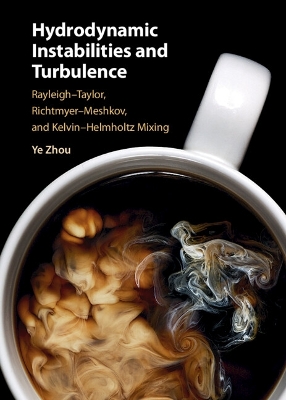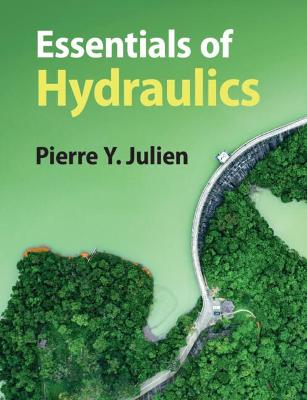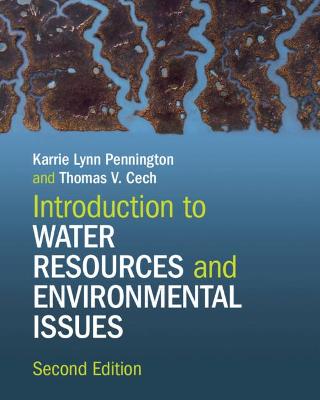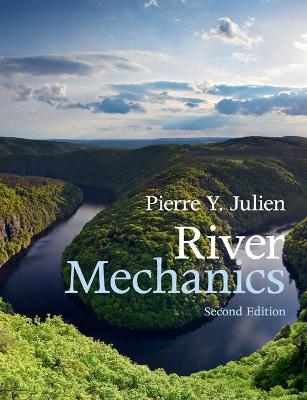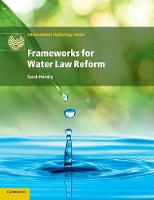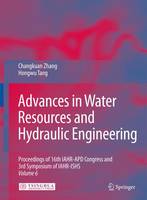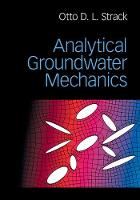Construction Dewatering and Groundwater Control
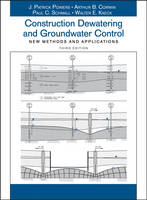 -15%
portes grátis
-15%
portes grátis
Construction Dewatering and Groundwater Control
New Methods and Applications
Powers, J. Patrick; Kaeck, Walter E.; Schmall, Paul C.; Corwin, Arthur B.
John Wiley & Sons Inc
05/2007
656
Dura
Inglês
9780471479437
15 a 20 dias
1728
1.2 Origins of Dewatering.
1.3 Development of Modern Dewatering Technology.
THE GEOLOGY OF SOILS.
2.1 Geologic Time Frame.
2.2 Formation of Soils.
2.3 Mineral Composition of Soils.
2.4 Rivers.
2.5 Lakes.
2.6 Estuaries.
2.7 Beaches.
2.8 Wind Deposits.
2.9 Glaciers-The Pleistocene Epoch.
2.10 Rock.
2.11 Limestone and Coral.
2.12 Tectonic Movements.
2.13 Man-Made Ground.
Soils and Water.
3.1 Soil Structure.
3.2 Gradation of Soils.
3.3 Porosity, Void Ratio and Water Content.
3.4 Relative Density, Specific Gravity, and Unit Weight.
3.5 Capillarity and Unsaturated Flow.
3.6 Specific Yield and Specific Retention.
3.7 Hydraulic Conductivity.
3.8 Plasticity and Cohesion of Silts and Clays .
3.9 Unified Soil Classification System (ASTM D-2487).
3.10 Soil Descriptions.
3.11 Visual and Manual Classification of Soils.
3.12 Seepage Forces and Soil Stress.
3.13 Gravity Drainage of Granular Soils.
3.14 Drainage of Silts and Clays: Pore Pressure Control.
3.15 Settlement as a Result of Dewatering.
3.16 Preconsolidation.
3.17 Other Side Effects of Dewatering.
Hydrology of The Ideal Aquifer.
4.1 Definition of the Ideal Aquifer.
4.2 Transmissivity T.
4.3 Storage Coefficient Cs and Specific Yield .
4.4 Pumping from a Confined Aquifer.
4.5 Recovery Calculations.
4.6 The Unconfined or Water Table Aquifer.
Characteristics of Natural Aquifers.
5.1 Anisotropy: Stratified Soils.
5.2 Horizontal Variability.
5.3 Recharge Boundaries: Radius of Influence R0.
5.4 Barrier Boundaries.
5.5 Delayed Release from Storage.
Dewatering Design Using Analytical Methods.
6.1 Radial Flow to a Well in a Confined Aquifer.
6.2 Radial Flow to a Well in a Water Table Aquifer.
6.3 Radial Flow to a Well in a Mixed Aquifer.
6.4 Flow to a Drainage Trench from a Line Source.
6.5 The System as a Well: Equivalent Radius rs.
6.6 Radius of Influence Ro.
6.7 Hydraulic Conductivity K and Transmissivity T.
6.8 Initial Head H and Final Head h.
6.9 Partial Penetration.
6.10 Storage Depletion.
6.11 Specific Capacity of the Aquifer.
6.12 Cumulative Drawdowns or Superposition.
6.13 Capacity of the Well Qw.
6.14 Flow Net Analysis and the Method of Fragments .
6.15 Concentric Dewatering Systems.
6.16 Vertical Flow.
6.17 Gravel Tremie.
Groundwater Modeling using Numerical Methods.
7.1 Models in Dewatering Practice.
7.2 When to Consider a Numerical Model .
7.3 Principal Steps in Model Design and Application.
7.4 The Conceptual Model: Defining the Problem to be Modeled .
7.5 Selecting the Program.
7.6 Introduction to MODFLOW.
7.7 Verification.
7.8 Calibration.
7.9 Prediction and Parametric Analyses.
7.10 Some Practical Modeling Problems.
7.11 2-D Model: Well System in a Water Table Aquifer.
7.12 Calibrating the Model .
7.13 3-D Model: Partial Penetration.
7.14 3-D Model: Vertical Flow.
7.15 3-D Model: Transient Analysis of a Progressive Trench Excavation.
7.16 3-D Model: Feasibility of Tunneling in a Stratified Aquifer with Proximate Recharge.
Monitoring.
8.1 Subsurface Information.
8.2 Ordinary Piezometers and True Piezometers.
8.3 Piezometer Construction.
8.4 Verification of Piezometer Performance.
8.5 Obtaining Data from Piezometers.
8.6 Pore Pressure Piezometers in Fine-grained Soils.
8.7 Direct Push Technologies for Piezometer Installation.
Pumping Tests.
9.1 When a Pumping test Is Advisable.
9.2 Planning the Test.
9.3 Design of the Pumping Well.
9.4 Piezometer Array.
9.5 Duration of Pumpdown and Recovery.
9.6 Pumping Rate.
9.7 Monitoring the Test .
9.8 Analysis of Pumping Test Data.
9.9 Tidal Corrections.
9.10 Well Loss.
9.11 Step Drawdown Tests.
9.12 Testing of Low Yield Wells .
9.13 Delayed Storage Release: Boulton Analysis.
Surface Hydrology.
10.1 Lakes and Reservoirs.
10.2 Bays and Ocean Beaches.
10.3 Rivers.
10.4 Precipitation.
10.5 Disposal of Dewatering Discharge.
10.6 Water from Existing Structures.
Geotechnical Investigation of Dewatering Problems.
11.1 Investigation Approach and Objectives.
11.2 Preliminary Studies and Investigations.
11.3 Borings and Test Pits.
11.4 In Situ Test Methods.
11.5 Piezometers and Observation Wells.
11.6 Borehole Seepage Tests for Evaluation of Hydraulic Conductivity.
11.7 Laboratory Analysis of Samples.
11.8 Chemical Tests of Groundwater.
11.9 Geophysical Methods.
11.10 Pumping Tests.
11.11 Permanent Effect of Structures on the Groundwater Body.
11.12 Investigation of Potential Side Effects of Dewatering.
11.13 Presentation in the Bidding Documents.
Pump Theory.
12.1 Types of Pumps Used in Dewatering.
12.2 Total Dynamic Head.
12.3 Pump Performance Curves.
12.4 Affinity Laws.
12.5 Cavitation and Net Positive Suction Head.
12.6 Engine Power.
12.7 Electric Power.
12.8 Vacuum Pumps.
12.9 Air Lift Pumping.
12.10 Testing of Pumps.
Groundwater Chemistry, Bacteriology, and Fouling of Dewatering Systems.
13.1 Types of Corrosion.
13.2 Corrosive Groundwater Conditions.
13.3 Dewatering in Corrosive Groundwater Conditions.
13.4 Incrustation.
13.5 Mineral Incrustation.
13.6 Biological Incrustation.
13.7 Dewatering Systems and Incrustation.
13.8 Field Evaluation of Well Fouling.
13.9 Rehabilitation and Maintenance for Incrustation.
13.10 Analysis of Groundwater.
Contaminated Groundwater.
14.1 Contaminants Frequently Encountered.
14.2 Design Options at a Contaminated Site.
14.3 Estimating Water Quantity to Be Treated.
14.4 Other Considerations in Treatment Design.
14.5 Elements of Groundwater Treatment.
14.6 Recovery of Contaminated Water with Dewatering Techniques.
14.7 Dynamic Barriers.
14.8 Wellpoint Systems and Multi-Phase Contaminants.
14.9 Reinjection.
14.10 Health and Safety.
14.11 Regulating Authorities.
Piping Systems.
15.1 Dewatering Pipe and Fittings.
15.2 Losses in Discharge Piping.
15.3 Losses in Wellpoint Header Lines.
15.4 Losses in Ejector Headers.
15.5 Water Hammer.
Choosing a Method of Groundwater Control.
16.1 To Pump or not to Pump.
16.2 Open Pumping versus Pre-drainage.
16.3 Methods of Pre-drainage.
16.4 Methods of Cut-off and Exclusion.
16.5 Methods in Combination .
Sumps, Drains, and Open Pumping.
17.1 Soil and Water Conditions.
17.2 Boils and Blows.
17.3 Construction of Sumps.
17.4 Ditches and Drains.
17.5 Gravel Bedding.
17.6 Slope Stabilization with Sandbags, Gravel and Geotextiles.
17.7 Use of Geotextiles.
17.8 Soldier Piles and Lagging: Standup Time.
17.9 Long-Term Effect of Buried Drains.
17.10 Leaking Utilities.
17.11 Diagonal Wellpoints.
17.12 Horizontal Wellpoints.
Deep Well Systems .
18.1 Testing during Well Construction .
18.2 Well Installation and Construction Methods.
18.3 Wellscreen and Casing .
18.4 Filter Packs .
18.5 Development of Wells .
18.6 Well Construction Details .
18.7 Pressure Relief Wells, Vacuum Wells .
18.8 Wells that Pump Sand .
18.9 Systems of Low-Capacity Wells .
Wellpoint Systems.
19.1 Suction Lifts.
19.2 Single and Multi-stage Systems.
19.3 Wellpoint Design.
19.4 Wellpoint Spacing.
19.5 Wellpoint Depth.
19.6 Installation of Wellpoints.
19.7 Filter Sands.
19.8 Wellpoint Pumps, Header and Discharge Piping.
19.9 Tuning Wellpoint Systems.
19.10 Air/Water Separation.
19.11 Automatic Mops.
19.12 Vertical Wellpoint Pumps.
19.13 Wellpoints for Stabilization of Fine-Grained Soils.
Ejector Systems and Other Methods.
20.1 Two-Pipe and Single-Pipe Ejectors.
20.2 Ejector Pumping Stations.
20.3 Ejector Efficiency.
20.4 Design of Nozzles and Venturis.
20.5 Ejector Risers and Swings.
20.6 Ejector Headers.
20.7 Ejector Installation.
20.8 Ejectors and Groundwater Quality.
20.9 Ejectors and Soil Stabilization.
20.10 Drilled Horizontal Wells.
20.11 Trencher Drains.
Groundwater Cut-off Structures.
21.1 Cut-off Terminology and Efficiency.
21.2 Steel Sheet Piling.
21.3 Slurry Trenches.
21.4 Slurry Diaphragm Walls.
21.5 Secant Piles.
21.6 Deep Soil Mixing.
21.7 Tremie Seals.
Ground Freezing .
22.1 General Principles.
22.2 Freezing Equipment and Methods.
22.3 Design.
22.4 Freezing Applications.
24.5 Effect of Groundwater Movement.
22.6 Ground Movement Potential as a Result of artificial Freezing.
Artificial Recharge.
23.1 Applications of Artificial Recharge.
23.2 Design Objectives.
23.3 Potential Problems with Recharge Water and Plugging of Wells.
23.4 Sources of Recharge Water.
23.5 Treatment of Recharge Water .
23.6 Construction of Recharge Systems.
23.7 Operation and Maintenance of Recharge Systems .
23.8 Permits for Recharge Operations.
Electrical Design for Dewatering Systems.
24.1 Electrical Motors.
24.2 Motor Controls.
24.3 Power Factor.
24.4 Standby Generators.
24.5 Switchgear and Distribution Systems.
24.6 Grounding of Electrical Circuits.
24.7 Cost of Electrical Energy.
Long-Term Dewatering Systems.
25.1 Types of Long-Term Systems.
25.2 Pumps.
25.3 Wellscreens and Wellpoint Screens.
25.4 Pipe and Fittings.
25.5 Groundwater Chemistry and Bacteriology.
25.6 Access for Maintenance.
25.7 Instrumentation and Controls.
Dewatering Costs.
26.1 Format of the Estimate.
26.2 Basic Cost Data.
26.3 Mobilization.
26.4 Installation and Removal.
26.5 Operation and Maintenance.
26.6 Summary.
26.7 Specialty Dewatering Subcontractor Quotations.
Dewatering Specifications, Allocation of Risk, Dispute Avoidance and Resolution of Disputes.
27.1 Performance Specifications.
27.2 Owner-Designed Dewatering Systems.
27.3 Specified Minimum Systems.
27.4 Dewatering Submittals.
27.5 Third Party Damage Caused by Dewatering.
27.6 Differing Site Conditions.
27.7 Disputes Review Board.
Appendix A.
Appendix B.
1.2 Origins of Dewatering.
1.3 Development of Modern Dewatering Technology.
THE GEOLOGY OF SOILS.
2.1 Geologic Time Frame.
2.2 Formation of Soils.
2.3 Mineral Composition of Soils.
2.4 Rivers.
2.5 Lakes.
2.6 Estuaries.
2.7 Beaches.
2.8 Wind Deposits.
2.9 Glaciers-The Pleistocene Epoch.
2.10 Rock.
2.11 Limestone and Coral.
2.12 Tectonic Movements.
2.13 Man-Made Ground.
Soils and Water.
3.1 Soil Structure.
3.2 Gradation of Soils.
3.3 Porosity, Void Ratio and Water Content.
3.4 Relative Density, Specific Gravity, and Unit Weight.
3.5 Capillarity and Unsaturated Flow.
3.6 Specific Yield and Specific Retention.
3.7 Hydraulic Conductivity.
3.8 Plasticity and Cohesion of Silts and Clays .
3.9 Unified Soil Classification System (ASTM D-2487).
3.10 Soil Descriptions.
3.11 Visual and Manual Classification of Soils.
3.12 Seepage Forces and Soil Stress.
3.13 Gravity Drainage of Granular Soils.
3.14 Drainage of Silts and Clays: Pore Pressure Control.
3.15 Settlement as a Result of Dewatering.
3.16 Preconsolidation.
3.17 Other Side Effects of Dewatering.
Hydrology of The Ideal Aquifer.
4.1 Definition of the Ideal Aquifer.
4.2 Transmissivity T.
4.3 Storage Coefficient Cs and Specific Yield .
4.4 Pumping from a Confined Aquifer.
4.5 Recovery Calculations.
4.6 The Unconfined or Water Table Aquifer.
Characteristics of Natural Aquifers.
5.1 Anisotropy: Stratified Soils.
5.2 Horizontal Variability.
5.3 Recharge Boundaries: Radius of Influence R0.
5.4 Barrier Boundaries.
5.5 Delayed Release from Storage.
Dewatering Design Using Analytical Methods.
6.1 Radial Flow to a Well in a Confined Aquifer.
6.2 Radial Flow to a Well in a Water Table Aquifer.
6.3 Radial Flow to a Well in a Mixed Aquifer.
6.4 Flow to a Drainage Trench from a Line Source.
6.5 The System as a Well: Equivalent Radius rs.
6.6 Radius of Influence Ro.
6.7 Hydraulic Conductivity K and Transmissivity T.
6.8 Initial Head H and Final Head h.
6.9 Partial Penetration.
6.10 Storage Depletion.
6.11 Specific Capacity of the Aquifer.
6.12 Cumulative Drawdowns or Superposition.
6.13 Capacity of the Well Qw.
6.14 Flow Net Analysis and the Method of Fragments .
6.15 Concentric Dewatering Systems.
6.16 Vertical Flow.
6.17 Gravel Tremie.
Groundwater Modeling using Numerical Methods.
7.1 Models in Dewatering Practice.
7.2 When to Consider a Numerical Model .
7.3 Principal Steps in Model Design and Application.
7.4 The Conceptual Model: Defining the Problem to be Modeled .
7.5 Selecting the Program.
7.6 Introduction to MODFLOW.
7.7 Verification.
7.8 Calibration.
7.9 Prediction and Parametric Analyses.
7.10 Some Practical Modeling Problems.
7.11 2-D Model: Well System in a Water Table Aquifer.
7.12 Calibrating the Model .
7.13 3-D Model: Partial Penetration.
7.14 3-D Model: Vertical Flow.
7.15 3-D Model: Transient Analysis of a Progressive Trench Excavation.
7.16 3-D Model: Feasibility of Tunneling in a Stratified Aquifer with Proximate Recharge.
Monitoring.
8.1 Subsurface Information.
8.2 Ordinary Piezometers and True Piezometers.
8.3 Piezometer Construction.
8.4 Verification of Piezometer Performance.
8.5 Obtaining Data from Piezometers.
8.6 Pore Pressure Piezometers in Fine-grained Soils.
8.7 Direct Push Technologies for Piezometer Installation.
Pumping Tests.
9.1 When a Pumping test Is Advisable.
9.2 Planning the Test.
9.3 Design of the Pumping Well.
9.4 Piezometer Array.
9.5 Duration of Pumpdown and Recovery.
9.6 Pumping Rate.
9.7 Monitoring the Test .
9.8 Analysis of Pumping Test Data.
9.9 Tidal Corrections.
9.10 Well Loss.
9.11 Step Drawdown Tests.
9.12 Testing of Low Yield Wells .
9.13 Delayed Storage Release: Boulton Analysis.
Surface Hydrology.
10.1 Lakes and Reservoirs.
10.2 Bays and Ocean Beaches.
10.3 Rivers.
10.4 Precipitation.
10.5 Disposal of Dewatering Discharge.
10.6 Water from Existing Structures.
Geotechnical Investigation of Dewatering Problems.
11.1 Investigation Approach and Objectives.
11.2 Preliminary Studies and Investigations.
11.3 Borings and Test Pits.
11.4 In Situ Test Methods.
11.5 Piezometers and Observation Wells.
11.6 Borehole Seepage Tests for Evaluation of Hydraulic Conductivity.
11.7 Laboratory Analysis of Samples.
11.8 Chemical Tests of Groundwater.
11.9 Geophysical Methods.
11.10 Pumping Tests.
11.11 Permanent Effect of Structures on the Groundwater Body.
11.12 Investigation of Potential Side Effects of Dewatering.
11.13 Presentation in the Bidding Documents.
Pump Theory.
12.1 Types of Pumps Used in Dewatering.
12.2 Total Dynamic Head.
12.3 Pump Performance Curves.
12.4 Affinity Laws.
12.5 Cavitation and Net Positive Suction Head.
12.6 Engine Power.
12.7 Electric Power.
12.8 Vacuum Pumps.
12.9 Air Lift Pumping.
12.10 Testing of Pumps.
Groundwater Chemistry, Bacteriology, and Fouling of Dewatering Systems.
13.1 Types of Corrosion.
13.2 Corrosive Groundwater Conditions.
13.3 Dewatering in Corrosive Groundwater Conditions.
13.4 Incrustation.
13.5 Mineral Incrustation.
13.6 Biological Incrustation.
13.7 Dewatering Systems and Incrustation.
13.8 Field Evaluation of Well Fouling.
13.9 Rehabilitation and Maintenance for Incrustation.
13.10 Analysis of Groundwater.
Contaminated Groundwater.
14.1 Contaminants Frequently Encountered.
14.2 Design Options at a Contaminated Site.
14.3 Estimating Water Quantity to Be Treated.
14.4 Other Considerations in Treatment Design.
14.5 Elements of Groundwater Treatment.
14.6 Recovery of Contaminated Water with Dewatering Techniques.
14.7 Dynamic Barriers.
14.8 Wellpoint Systems and Multi-Phase Contaminants.
14.9 Reinjection.
14.10 Health and Safety.
14.11 Regulating Authorities.
Piping Systems.
15.1 Dewatering Pipe and Fittings.
15.2 Losses in Discharge Piping.
15.3 Losses in Wellpoint Header Lines.
15.4 Losses in Ejector Headers.
15.5 Water Hammer.
Choosing a Method of Groundwater Control.
16.1 To Pump or not to Pump.
16.2 Open Pumping versus Pre-drainage.
16.3 Methods of Pre-drainage.
16.4 Methods of Cut-off and Exclusion.
16.5 Methods in Combination .
Sumps, Drains, and Open Pumping.
17.1 Soil and Water Conditions.
17.2 Boils and Blows.
17.3 Construction of Sumps.
17.4 Ditches and Drains.
17.5 Gravel Bedding.
17.6 Slope Stabilization with Sandbags, Gravel and Geotextiles.
17.7 Use of Geotextiles.
17.8 Soldier Piles and Lagging: Standup Time.
17.9 Long-Term Effect of Buried Drains.
17.10 Leaking Utilities.
17.11 Diagonal Wellpoints.
17.12 Horizontal Wellpoints.
Deep Well Systems .
18.1 Testing during Well Construction .
18.2 Well Installation and Construction Methods.
18.3 Wellscreen and Casing .
18.4 Filter Packs .
18.5 Development of Wells .
18.6 Well Construction Details .
18.7 Pressure Relief Wells, Vacuum Wells .
18.8 Wells that Pump Sand .
18.9 Systems of Low-Capacity Wells .
Wellpoint Systems.
19.1 Suction Lifts.
19.2 Single and Multi-stage Systems.
19.3 Wellpoint Design.
19.4 Wellpoint Spacing.
19.5 Wellpoint Depth.
19.6 Installation of Wellpoints.
19.7 Filter Sands.
19.8 Wellpoint Pumps, Header and Discharge Piping.
19.9 Tuning Wellpoint Systems.
19.10 Air/Water Separation.
19.11 Automatic Mops.
19.12 Vertical Wellpoint Pumps.
19.13 Wellpoints for Stabilization of Fine-Grained Soils.
Ejector Systems and Other Methods.
20.1 Two-Pipe and Single-Pipe Ejectors.
20.2 Ejector Pumping Stations.
20.3 Ejector Efficiency.
20.4 Design of Nozzles and Venturis.
20.5 Ejector Risers and Swings.
20.6 Ejector Headers.
20.7 Ejector Installation.
20.8 Ejectors and Groundwater Quality.
20.9 Ejectors and Soil Stabilization.
20.10 Drilled Horizontal Wells.
20.11 Trencher Drains.
Groundwater Cut-off Structures.
21.1 Cut-off Terminology and Efficiency.
21.2 Steel Sheet Piling.
21.3 Slurry Trenches.
21.4 Slurry Diaphragm Walls.
21.5 Secant Piles.
21.6 Deep Soil Mixing.
21.7 Tremie Seals.
Ground Freezing .
22.1 General Principles.
22.2 Freezing Equipment and Methods.
22.3 Design.
22.4 Freezing Applications.
24.5 Effect of Groundwater Movement.
22.6 Ground Movement Potential as a Result of artificial Freezing.
Artificial Recharge.
23.1 Applications of Artificial Recharge.
23.2 Design Objectives.
23.3 Potential Problems with Recharge Water and Plugging of Wells.
23.4 Sources of Recharge Water.
23.5 Treatment of Recharge Water .
23.6 Construction of Recharge Systems.
23.7 Operation and Maintenance of Recharge Systems .
23.8 Permits for Recharge Operations.
Electrical Design for Dewatering Systems.
24.1 Electrical Motors.
24.2 Motor Controls.
24.3 Power Factor.
24.4 Standby Generators.
24.5 Switchgear and Distribution Systems.
24.6 Grounding of Electrical Circuits.
24.7 Cost of Electrical Energy.
Long-Term Dewatering Systems.
25.1 Types of Long-Term Systems.
25.2 Pumps.
25.3 Wellscreens and Wellpoint Screens.
25.4 Pipe and Fittings.
25.5 Groundwater Chemistry and Bacteriology.
25.6 Access for Maintenance.
25.7 Instrumentation and Controls.
Dewatering Costs.
26.1 Format of the Estimate.
26.2 Basic Cost Data.
26.3 Mobilization.
26.4 Installation and Removal.
26.5 Operation and Maintenance.
26.6 Summary.
26.7 Specialty Dewatering Subcontractor Quotations.
Dewatering Specifications, Allocation of Risk, Dispute Avoidance and Resolution of Disputes.
27.1 Performance Specifications.
27.2 Owner-Designed Dewatering Systems.
27.3 Specified Minimum Systems.
27.4 Dewatering Submittals.
27.5 Third Party Damage Caused by Dewatering.
27.6 Differing Site Conditions.
27.7 Disputes Review Board.
Appendix A.
Appendix B.

